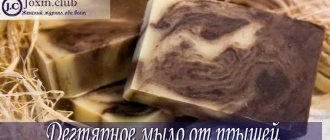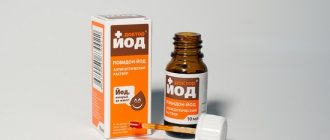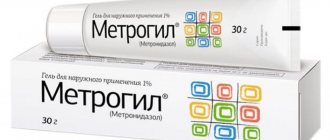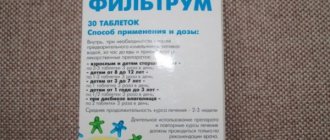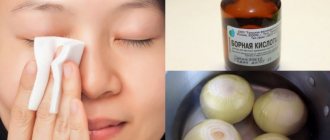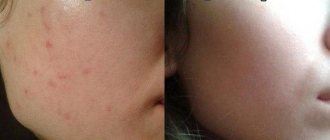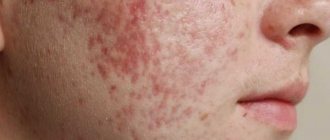Origin
The history of the origin of tar soap has deep roots going back to antiquity. There is no consensus on when and where this miraculous remedy was invented. There are three versions:
- Near one of the mountains in Europe in ancient times, the tribes living there performed pagan rituals of worshiping the gods. After the rituals, water containing fat and lye was poured into a nearby river. The women of the tribe noticed one property that after the rituals, washing clothes goes better, and the skin on the hands becomes softer and smoother, and they took note of this.
- During the Roman conquest of the Germanic tribes, they adopted many recipes for healing cosmetics, including tar soap.
- Remains of pieces of soap, as well as the cauldrons where it was made, were found during excavations in Pompeii. The recipe for making it came there from Ancient Babylon.
What is tar soap
Tar soap is classified as medical, like any soap; it is made on the basis of animal and vegetable fats, from which sodium salts of saturated fatty acids are extracted. Its obligatory component is birch tar, and medicinal tar soap must contain at least 10%. You can prepare this remedy at home using regular toilet soap, preferably for children.
The block is grated on a coarse grater, melted in a water bath with the addition of a small amount of water and mixed with birch tar, which can be bought at a pharmacy. The optimal proportions are 9:1. You can add a couple of drops of essential and vegetable oils to it, which are used for problematic, acne-prone skin. For example:
- tea tree;
- grape seeds;
- jojoba;
- peach
Another homemade medicinal and cosmetic product can be enriched with honey. With this additive, tar soap helps against acne even better, and the essential oil partially eliminates the specific smell of tar.
The therapeutic effect of soap is due to the properties of tar:
- antiseptic;
- antiparasitic;
- antifungal;
- anti-inflammatory;
- drying;
- regenerating.
This allows you to use tar soap against acne of any nature, including those caused by demodex mites. It disinfects and soothes inflamed skin, relieves itching, and eliminates redness. The blood supply to the dermis improves, young healthy cells are actively formed, damage and microcracks heal faster, and acne scars resolve. Tar reduces the production of sebum, the abundance of which provokes the appearance of acne.
Useful properties of tar soap
The healing base of tar soap is natural birch tar. Typically, its percentage in a bar of soap is about 10%. Since ancient times, birch in Rus' was known for its healing properties; decoctions were made from its buds and bark, and they were steamed with brooms from it in baths. The tar obtained during the distillation process from the upper layer of bark is currently actively used in the cosmetics industry.
Due to the flooding of the market with all kinds of waste products from the petrochemical industry - gels, shampoos, foams, we have forgotten a little about ordinary bar soap.
Now, having had enough of all the variety of cleaning chemicals, people have begun to return to using simpler, natural products to solve cosmetic problems.
Tar soap has a large number of beneficial properties and actively helps solve skin and hair problems.
The main medicinal properties of this soap include the following:
- has pronounced antiseptic properties;
- dries out blackheads, pustules, pimples on the face and body;
- effectively eliminates blackheads on the face and body;
- helps in treating fungal infections;
- removes unpleasant oily shine and makes it soft and velvety.
Does tar soap help with acne?
In fact, tar soap - just like laundry soap - does not get rid of acne. Undoubtedly, this product perfectly cleanses the skin. And you can even feel that cherished “creaking” of cleanliness, but this is not the absolute minimum for clean and healthy skin. After all, along with all the dirt, you remove the water-lipid mantle, which protects and moisturizes the skin. You can read about this in detail in the article laundry soap for acne.
First of all, you need to remember that 90% of it is just soap - alkali, which is an aggressive agent.
And the tar itself is also a very strange component. It is extracted from birch bark and contains resins, phenol, toluene, and xylene. If we consider all these substances separately, we can understand that their properties are not so healing. And in some cases even dangerous. In the old days, birch tar was used to treat rubber, leather goods, and lubricate various household parts. And although it is positioned as an antiseptic that is used in medicine, gardening and cosmetology, together with such a powerful component as alkali, its beneficial properties are reduced to a minimum.
There are a lot of proven antiseptic and antifungal products that give results, do not harm the skin and are approved by dermatologists and cosmetologists.
These useful tools include:
- tea tree essential oil;
- lavender essential oil;
- grape seed oil;
- aloe juice;
- honey;
- decoctions of chamomile, calendula, nettle, etc.;
- cosmetic clay;
- salicylic acid;
- succinic acid;
- chlorhexidine.
All of these products are easily available and inexpensive. Their properties in the fight against rashes have been proven by science and cosmetologists. However, these remedies will not cure acne. To have healthy and clear skin, you need to eliminate the causes of acne. And only comprehensive care (with proper nutrition, cosmetic procedures and hygiene) can give good results. In some cases of skin diseases, even hormonal therapy cannot be avoided.
You must understand the responsibility with which you need to approach the treatment of your face. And before using this or that “high-profile” remedy, consult a specialist.
Using facial soap
First, let's look at the features of using this facial soap.
Most often it is used to treat facial acne and pimples, because... tar soap has a drying, antiseptic effect. To reduce acne, you need to wash 2 times a day for 1-2 weeks. Usually, the first results are noticeable after 3-5 days. When using this soap for medicinal washing, the following factors must be considered:
Oily facial skin
To reduce acne, people with oily skin need to wash their face 2-3 times a day. This makes the face velvety and matte, and the unpleasant oily sheen and blackheads disappear. Pores are less clogged with sebum and, accordingly, the process of formation of new acne slows down. In this case, if the acne rash is completely eliminated, you will need to wash your face with tar soap in order to maintain the effect.
Normal and combination skin
For people with normal and combination skin, it is enough to wash their face 1-2 times a week, since the likelihood of acne in this case is much less. When cleansing your face, you need to pay more attention to areas with oily sheen, since it is on them that most often pimples form.
Dry facial skin
For dry skin, it is enough to wash your face with tar soap 3-4 times a month. It is practically not prone to the formation of pimples and blackheads. Therefore, it will be enough to wash your face only a few times during the month for prevention. The skin should be protected from drying out.
Spot use
If there are small pinpoint pimples on your face, you can make spot masks for treatment and drying. You should scrape a little soap from the bar with your fingernail, then dilute it in water and apply it to the acne. It is especially good to do this at night, since the facial muscles relax overnight, the skin smoothes out, and the process of cleansing and drying acne goes much faster. Already in the morning you can find that the acne has dried out and crusted over.
Classic method of washing for acne
Lather your hands thickly and apply foam to your face. Keep the tar mask on for about five minutes and then wash off with cool water. After this procedure, in order to get rid of the slight drying effect, you need to apply some nourishing cream to the skin. Removes blackheads well. It is universal, suitable for boys, girls and teenagers.
How to use
It is enough to wash your face with this soap twice a day, in the morning and in the evening (if you do not tolerate the smell of tar very well, but you like the result, do not wash your face immediately before going to bed - let the smell dissipate, and only then go to bed). It is worth noting that you will not see instant results. It may take several weeks for the tar to take effect and for you to see significant changes in the condition of your skin.
An unpleasant smell is not always a reason to refuse soap. The only thing you may not like about tar soap is the smell of tar, which many people find very unpleasant. After washing, it disappears in about ten minutes, no more, so if you plan to cleanse only the skin of your face and hands with it, it will be enough for you to simply wash your face not before leaving the house, but a little earlier. Another option is to use various creams or just perfumes (the main thing is that the aroma of the perfume or cream completely covers the smell of tar, and does not mix with it, otherwise you risk hearing a lot of criticism addressed to you). And be sure to purchase a separate closed soap dish, otherwise the smell will spread throughout the bathroom. Of course, someone may say that no result can be worth the daily use of soap with such a specific smell, but you will probably forget about acne and other skin problems. Whether it's worth it is up to you to decide.
The undoubted advantage of tar soap is that almost everyone can wash their face with it (the exception is those people who are allergic to certain components), regardless of skin type. If you suddenly feel that it is drying out your skin too much, you can always use moisturizing creams.
In general, by purchasing a piece of tar soap you will get an excellent product for cleansing your skin and restoring your hair for very little money. Usually, one piece lasts for a month, or even more, so you can forget about acne and monthly costs for cleansers.
Body cleansing
Also, tar soap has found wide use in cleansing the body. Acne occurs not only on the face, but also on the chest, abdomen, thighs and back. Most often, acne on the body occurs in the back area. Sometimes individual pimples merge, turning into large local inflammations. This causes a lot of inconvenience and pain. This is especially true for people with oily skin types.
To get rid of acne on the back and body, you need to make a special solution of tar soap and wash your back and other problem areas with it for a week. After the cleansing procedure, you can wipe your back with lotion. It is better not to use an alcohol base, as this can dry out the skin and add additional irritated areas to the acne.
Separately, it is worth mentioning its specific smell. This smell comes from birch tar, which is part of the soap. It can be compared to the smell of rotted birch brooms. Usually, after using this product several times, the smell dulls. If it irritates you greatly, you can try wiping your face or body with some perfume lotion after washing.
Composition of tar soap
Tar soap consists of a soap base, tar and other components. The amount of tar in the composition may vary. This factor affects efficiency, color, smell.
The darker the soap, the more birch product it contains. Typically this amount is 10%. This soap is dark brown in color and the smell is not very strong.
The manufacturer may add other medicinal components. For example, adding chamomile makes an excellent antibacterial agent. If you add string or celandine, this soap can treat skin diseases.
Other uses
In addition to problematic skin of the face and body, tar soap is used to treat fungus, scalp diseases, intimate hygiene, and also as a prophylactic against colds.
Treatment of scalp skin diseases
Very often, such an unpleasant disease as psoriasis affects the scalp, causing dandruff, poor circulation due to stress, and much more. A special solution of tar soap helps improve blood circulation and restore hair structure. Especially for treatment in this case, a combination of tar soap and some kind of herbal decoction, for example, nettle, is well suited.
Removal of parasites
It is good for foot fungus and removing lice, and serves as a good antiseptic when washing wounds. To get rid of sweating and unpleasant odor from the feet, it is good to use a soap solution with potassium permanganate or a decoction of the string to wash your feet. Using such procedures 2-3 times a week for a month, you can get rid of this problem.
Since tar soap contains a natural antiseptic, it also effectively helps fight foot fungus.
Intimate area hygiene
In this case, before you start using it, you must consult your doctor, since the skin of the genitals is very sensitive. In this case, tar soap helps well in the fight against thrush (candidiasis) due to its drying and disinfecting properties. Effective for sexually transmitted infections such as gonorrhea, trichomoniasis, etc.
Treatment of skin diseases (dermatosis, eczema, seborrhea, psoriasis)
Relieves and soothes the manifestations of skin diseases during exacerbation. Tar soap foam masks relieve itching, dry out acne, reduce inflammation, and remove blackheads. But, of course, this is not a panacea and the use of this soap should be combined with taking the necessary medications.
Before using it for treatment, try it on a small area of skin first. If the itching and redness intensify, then you should not use it.
Preventative against colds
It is recommended to use this way only after consultation with a therapist.
Cotton swabs dipped in soap suds should be used to treat the sinuses; this will help reduce mucus secretions and reduce inflammation. But it should be noted that the nose may feel slightly dry for some time - a common characteristic for this soap.
Precautionary measures
Despite the large number of beneficial properties that tar soap has, it has some negative properties:
- dries the skin very much;
- may cause allergic reactions.
Therefore, if you have very sensitive skin of the face or body, as well as an allergy to tar, then it is better to refrain from using this soap.
It should be noted that even if you have normal to oily skin, you should not overuse it. If you wash it five times a day, acne will not disappear instantly, but allergies and irritation may well appear.
Recipes for tar masks
There are several effective recipes for masks with healing soap:
Effective tar mask for acne using cream
Mix a teaspoon of grated tar soap with 2 tablespoons of cream and add a pinch of cinnamon. Whisk all this and apply to the face for half an hour. Then wash off with warm chamomile infusion. The skin acquires a pleasant shade, becomes more elastic, and blackheads disappear. This mask goes well with moisturizer. Before use, consult a cosmetologist.
For oily skin, a mask that is a mixture of tar soap and coffee is suitable for acne and acne. Apply to the face with massaging movements and rinse with cool water. You can also add egg white or sour cream here.
A tar mask with oatmeal will be effective for dry skin.
Grate some soap and mix it with 3 tablespoons of oatmeal. Then whisk the mixture and apply to your face, hold for 15 minutes. Rinse off with warm water. This mask will be effective for people with very dry and sensitive skin. It will remove the tightening effect of soap, improve your complexion, and get rid of blackheads. But you should still take into account that if you are dry, it is better to use this product as rarely as possible.
Tar mask with nettle decoction for hair treatment
Beat the foam well in a small container and add a small amount of nettle decoction there. Then wash your hair in it. Usually, after several uses, the hair structure is restored, it becomes stronger and shinier. It should be used 2-3 times a week, otherwise the hair may become dull due to soap deposits.
How to make tar soap at home
There is nothing difficult in making homemade soap, which can not only wash your face, but also be used for other purposes.
Sequencing:
- Grate a piece of baby soap, melt it in a water bath and pour in a tablespoon of water.
- Add 2 tablespoons of birch tar.
- Stir and cool the mixture to 40°C.
- Then pour into molds and leave to harden.
To further enhance the beneficial properties, you can add decoctions of medicinal plants instead of water. Calendula, chamomile, celandine, yarrow, and string are perfect.
The amount of birch “resin” can be adjusted, but it should not be more than 3 tablespoons per 100 grams of baby soap.
If you don’t like the smell, the composition can be made more aromatic by adding essential oils or synthetic flavors. But you need to understand that the result may be unexpected.

